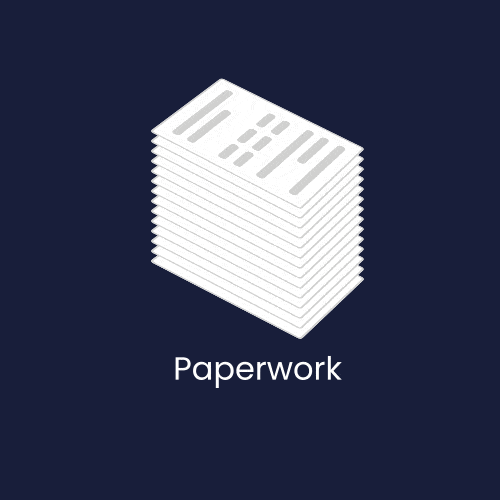Last-mile delivery is one of the most complex and costly parts of the logistics chain. It involves moving a product from a transportation hub to its final destination.
This process often faces challenges. These challenges include urban congestion, narrow delivery windows, high customer expectations, and real-time route changes. For businesses to thrive in this environment, they need to maximize efficiency in their routing and dispatch operations.
A Last Mile TMS helps solve these problems by automating routing and dispatch. It improves real-time visibility and optimizes routes. It also offers data-driven insights for better planning.
In this article, we will look at how a Last Mile TMS can change routing and dispatch planning. This change can lead to better efficiency, lower costs, and happier customers.
Routing & Dispatch Planning: The Backbone of Last-Mile Success
Routing and dispatch planning means finding the best routes for delivery vehicles. It also involves assigning drivers to make sure deliveries are on time. However, challenges like traffic congestion, weather conditions, driver availability, and fluctuating order volumes can make this process extremely complex.
A Last Mile TMS makes routing and dispatch planning easier. It provides a central platform that automatically plans routes using real-time data. Here’s how it works:
⦁ Automated Route Generation:
A Last Mile TMS evaluates multiple factors like delivery priorities, customer time windows, driver location, and road conditions to create optimized delivery routes.
⦁ Dynamic Dispatching:
Routes can be adjusted in real-time based on unexpected events like traffic jams, road closures, or last-minute order changes. The system continuously monitors all active deliveries, ensuring that dispatching is efficient.
⦁ Smart Driver Assignment:
Drivers are assigned to routes based on their availability, vehicle capacity, and proximity to the pick-up point. This ensures quick response times and efficient utilization of the driver fleet.
By automating these tasks, Last Mile TMS removes manual errors. It also cuts down planning time. This allows dispatchers and drivers to focus on meeting customer needs.
Route Optimization: Getting Deliveries Where They Need to Be—Fast
Route optimization is the process of determining the most efficient delivery routes that minimize costs and maximize productivity. This is often the most important part of last-mile delivery. It directly impacts delivery times, fuel costs, and customer satisfaction.
Key ways a Last Mile TMS optimizes routes include:
⦁ Real-Time Traffic and Road Conditions:
A Last Mile TMS can reroute drivers to avoid delays. It does this by considering live traffic updates, road closures, and other unexpected events.
⦁ Customer Delivery Time Windows:
A Last Mile TMS takes into account each customer’s preferred delivery time. It plans routes to match these preferences.
⦁ Driver Performance & Efficiency Metrics:
The system monitors driver behavior, such as idling, detours, and stop times. It learns from these patterns to improve future route planning.
By optimizing routes, businesses can save 20-40% on fuel and vehicle wear. They can also improve delivery times by 15-25%.
Strategic Planning: Laying the Foundation for Seamless Operations
Strategic planning in last-mile delivery means setting long-term goals for operations. It also involves aligning delivery processes to reach those goals. It requires a clear understanding of demand patterns, delivery territories, and resource utilization.
With a Last Mile TMS, strategic planning becomes a data-driven process:
⦁ Territory Planning and Allocation:
Last Mile TMS systems break large delivery areas into smaller, easier-to-manage zones. They do this based on demand, geography, and customer preferences. This allows businesses to allocate drivers and resources effectively across different regions.
⦁ Predictive Analytics & Demand Forecasting:
Last Mile TMS can predict busy times using past data. This helps businesses get ready for increases in demand. For example, retailers can plan for spikes during festive seasons, flash sales, or product launches.
⦁ Inventory & Fulfillment Planning:
By integrating inventory data with delivery routes, businesses can ensure that stock levels align with customer demand. The system can automatically determine the best fulfillment center for each order based on proximity and inventory availability.
This strategy improves how businesses operate. It helps them deliver faster, cut down on last-minute rushes, and keep better service all year.
Capacity Planning: Maximizing Load and Efficiency
Efficient capacity planning is critical for cost-effective last-mile delivery. The process ensures that delivery vehicles reach their full potential without overloading or underusing them.
How Last Mile TMS Supports Capacity Planning:
⦁ Load Optimization Algorithms:
A Last Mile TMS uses advanced algorithms to maximize vehicle capacity. For example, a system can improve how packages are placed in a truck. This helps balance weight, reduce empty space, and make unloading easier based on the delivery order.
⦁ Multi-Stop Route Planning:
A Last Mile TMS can plan routes with multiple stops. This allows one vehicle to deliver to several customers in one trip. The system determines the best sequence to minimize driving distance while ensuring timely deliveries.
⦁ Real-Time Capacity Adjustments:
Businesses can make quick decisions based on real-time data to handle unexpected changes. If a vehicle reaches capacity, the Last Mile TMS can reassign remaining orders to nearby vehicles to prevent delays.
Capacity planning ensures businesses maximize resource use, avoid additional trips, reduce overall transportation costs, and boost profitability.
Appointment-Based Delivery: Meeting Customer Expectations
Customer expectations for convenient, reliable delivery have never been higher. Appointment-based deliveries allow customers to select their preferred delivery windows, which provides transparency and enhances the overall customer experience.
Benefits of Appointment-Based Deliveries Through Last Mile TMS:
⦁ Scheduled Deliveries & Time Slot Management:
The Last Mile TMS allows customers to choose specific delivery windows, ensuring they are available to receive the package. It builds routes around customer preferences, reducing the number of failed delivery attempts.
⦁ Automated Customer Notifications:
A Last Mile TMS system can send automatic alerts to customers. These alerts include delivery status, estimated arrival times (ETA), and any changes. This helps improve transparency.
⦁ Reduced Customer Service Burden:
Real-time updates help customers, which reduces the workload for customer service teams. This lets them focus on more complex questions and better customer care.
This personalized delivery experience builds trust, increases brand loyalty, and reduces the likelihood of missed deliveries.
Driver Assignment & Dispatch: Ensuring the Right Match for Every Delivery
Driver assignment is the process of matching available drivers to delivery routes. A Last Mile TMS makes this process easier. It considers many factors to ensure the right driver is assigned to each delivery.
Automated Driver Assignment & Dispatch with Last Mile TMS:
⦁ Optimized Driver Assignment:
Last Mile TMS looks at each driver’s availability and experience with specific routes. It also considers the type of vehicle and load capacity. This helps assign drivers to the best delivery route.
⦁ Efficient Dispatch Operations:
Once drivers are assigned, the system gives them full delivery details. It also provides optimized routes and real-time updates for efficient dispatch. This allows for on-the-fly changes if needed.
⦁ Driver Performance Tracking:
A Last Mile TMS helps you see how drivers are performing. It tracks if they follow routes, delivery times, and company rules
Automated driver assignment leads to more efficient deliveries, greater driver productivity, and better use of resources.
Routing and dispatch planning are foundational to a successful last-mile delivery operation. A Last Mile TMS helps businesses automate and improve their processes. This leads to lower costs, faster deliveries, better driver productivity, and improved customer experiences.
As the logistics world changes, a Last Mile TMS solution like nuVizz helps businesses stay competitive and flexible. It prepares them to meet the needs of today’s consumers.
About nuVizz:
At nuVizz, we offer a comprehensive Last Mile TMS that addresses all the challenges associated with routing and dispatch planning. Our solution combines AI-driven route optimization, strategic capacity planning, real-time visibility, and robust dispatch operations, ensuring that shippers and carriers achieve cost efficiency, faster deliveries, and enhanced customer satisfaction. With nuVizz, businesses can automate their end-to-end last-mile operations and provide a seamless delivery experience.

